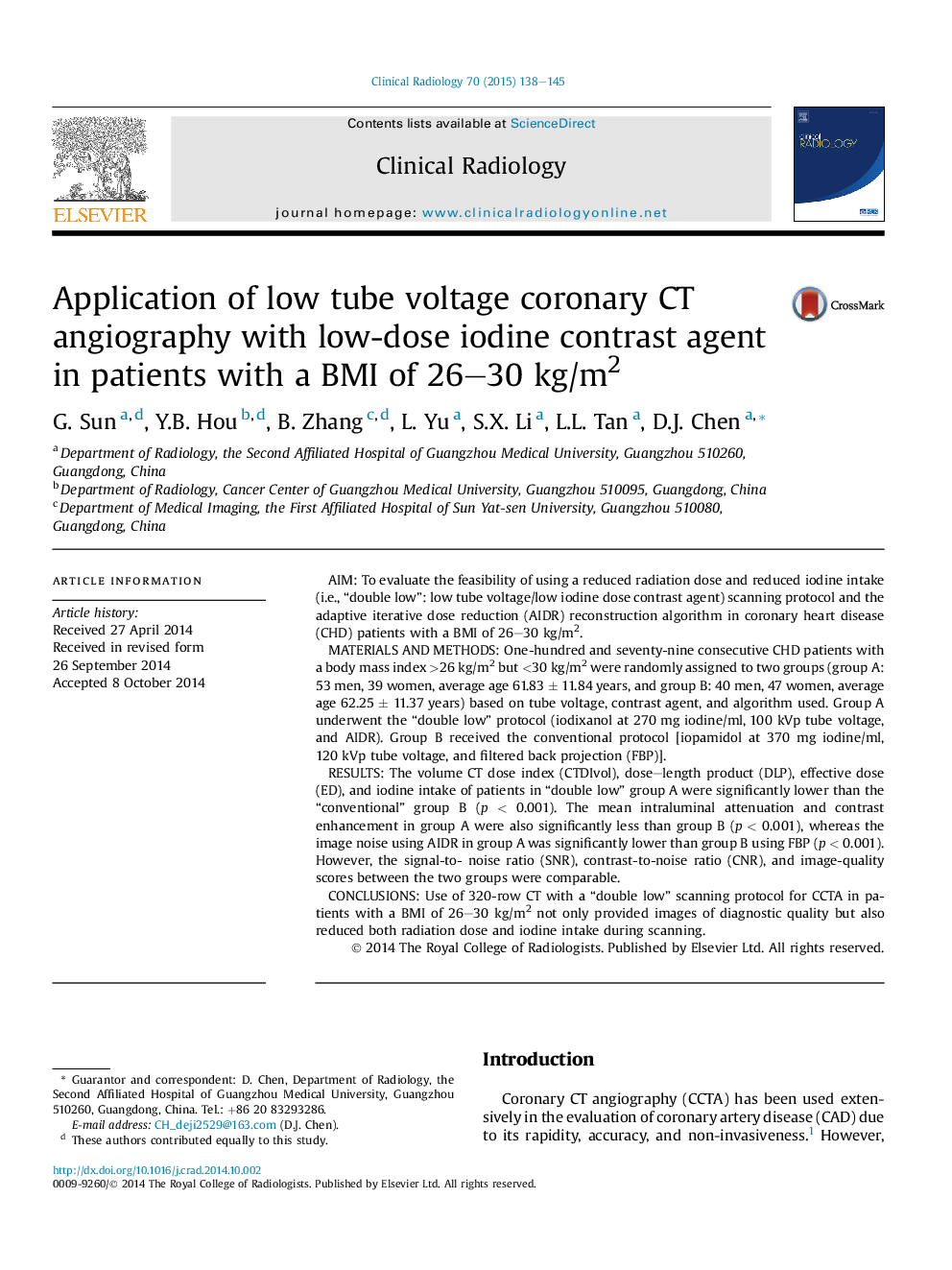| Article ID | Journal | Published Year | Pages | File Type |
|---|---|---|---|---|
| 6190988 | Clinical Radiology | 2015 | 8 Pages |
â¢We use CCTA with low tube voltage and iodine dose for overweight patients.â¢Low tube voltage, Iodixanol and AIDR were used in double low protocol.â¢The double low protocol provided low CTDIvol, DLP, ED, and iodine intake.â¢The double low protocol also provided images of diagnostic quality.
AimTo evaluate the feasibility of using a reduced radiation dose and reduced iodine intake (i.e., “double low”: low tube voltage/low iodine dose contrast agent) scanning protocol and the adaptive iterative dose reduction (AIDR) reconstruction algorithm in coronary heart disease (CHD) patients with a BMI of 26-30 kg/m2.Materials and methodsOne-hundred and seventy-nine consecutive CHD patients with a body mass index >26 kg/m² but <30 kg/m² were randomly assigned to two groups (group A: 53 men, 39 women, average age 61.83 ± 11.84 years, and group B: 40 men, 47 women, average age 62.25 ± 11.37 years) based on tube voltage, contrast agent, and algorithm used. Group A underwent the “double low” protocol (iodixanol at 270 mg iodine/ml, 100 kVp tube voltage, and AIDR). Group B received the conventional protocol [iopamidol at 370 mg iodine/ml, 120 kVp tube voltage, and filtered back projection (FBP)].ResultsThe volume CT dose index (CTDIvol), dose-length product (DLP), effective dose (ED), and iodine intake of patients in “double low” group A were significantly lower than the “conventional” group B (p < 0.001). The mean intraluminal attenuation and contrast enhancement in group A were also significantly less than group B (p < 0.001), whereas the image noise using AIDR in group A was significantly lower than group B using FBP (p < 0.001). However, the signal-to- noise ratio (SNR), contrast-to-noise ratio (CNR), and image-quality scores between the two groups were comparable.ConclusionsUse of 320-row CT with a “double low” scanning protocol for CCTA in patients with a BMI of 26-30 kg/m2 not only provided images of diagnostic quality but also reduced both radiation dose and iodine intake during scanning.
